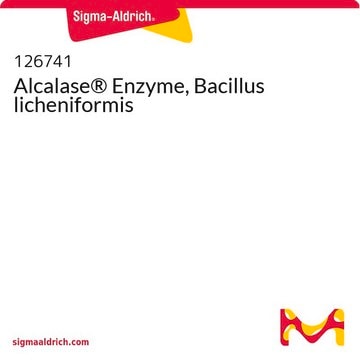V2010
Viscozyme® L
cellulolytic enzyme mixture
Synonym(s):
Cell Wall Degrading Enzyme Complex from Aspergillus sp., Lysing Enzyme from Aspergillus sp.
About This Item
Recommended Products
biological source
fermentation/recombinant
form
liquid
enzyme activity
≥100 FBGU/g
technique(s)
protein extraction: suitable
density
~1.2 g/mL at 25 °C (lit.)
suitability
suitable for cell lysis
application(s)
cell analysis
storage temp.
2-8°C
General description
Application
- in the extraction of polyphenol from grapefruit and unripe apples.
- to study the effect of its supplementation on nutritive value and silage characteristics of sunflower silage.
- for simulation of the fermentation process during in vitro digestibility of former food products (FFPs).
- for enzymatic treatment, to study its effects on the antioxidant properties of wheat bran.
Biochem/physiol Actions
Features and Benefits
- Not a GMO and doesn′t contain GMOs.
- Made by fermentation of a microorganism.
- Improves process through faster, more efficient oil/water separation.
Legal Information
Signal Word
Danger
Hazard Statements
Precautionary Statements
Hazard Classifications
Resp. Sens. 1
Storage Class Code
10 - Combustible liquids
WGK
WGK 1
Flash Point(F)
Not applicable
Flash Point(C)
Not applicable
Personal Protective Equipment
Certificates of Analysis (COA)
Search for Certificates of Analysis (COA) by entering the products Lot/Batch Number. Lot and Batch Numbers can be found on a product’s label following the words ‘Lot’ or ‘Batch’.
Already Own This Product?
Find documentation for the products that you have recently purchased in the Document Library.
Customers Also Viewed
Our team of scientists has experience in all areas of research including Life Science, Material Science, Chemical Synthesis, Chromatography, Analytical and many others.
Contact Technical Service









